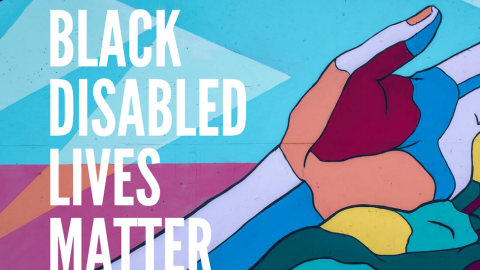Disability Concerns, Racial Reconciliation
At the Intersection of Racism and Ableism
0 comments
1500 views

This article has been adapted by permission from an article by Deaconess Lynn Swedberg, DisAbility Ministries Committee newsletter, United Methodist Church.
Social distancing has interrupted life, but it has not stopped many of us from speaking out for an end to the killing of unarmed black men and women by police. Did you know that 30 to 80 percent of those killed have been persons with some type of disability? The exact number is unknown because no one tracks these statistics. This speaks to the overlooked intersectionality of racism and ableism.
There are instances of Black Deaf men being shot because they didn't hear the verbal command to stop. At least a quarter of victims were experiencing a psychiatric crisis and unable to communicate their needs. If one's disability causes slower or atypical speech or reactions, a person is at a higher risk of being injured or killed. (See the following for more information: The Guardian, Ruderman study on use of force and disability, Harriet Tubman Collective, Time Magazine.)
Black disabled or Deaf people find themselves doubly disadvantaged, a phenomenon known as intersectionality. In So You Want to Talk About Race, author Ijeoma Oluo underscores the need to address all -isms in the fight to eradicate racism, and does a great job of demonstrating the intersectionality of ableism and racism.
Black children are disproportionately punished, suspended, arrested, and incarcerated, and the rates for children with disabilities are even higher. As we work for racial justice and systemic change, we need to keep children and adults of color with disabilities in the forefront of our discussions and actions. This page produced by United Methodist Women offers a variety of resources on helping eliminate the School to Prison Pipeline.
Even protest events need to plan for accessibility, as did a recent Milwaukee march. The route was level and the march led by wheelchair users who set the pace. Sign language interpreters were stationed throughout, and some leaders wore masks with transparent windows that allowed for lip-reading. Ear plugs were available at rest stations for people sensitive to the noise level.
If the anti-racism materials you are using do not incorporate disability, please supplement them with some of the resources listed below. Examine the language used to make sure it is not ableist, such as a recently published racism litany that asks forgiveness for being deaf, and an article equating blindness with a refusal to reckon with one’s own racism. Together we can help dismantle racism without overlooking or invoking ableism.
Suggested Resources
Disability Concerns, Church Admin & Finance
Disability Concerns, Church Admin & Finance
Disability Concerns, Training and Education
Disability Concerns
Connect to The Network and add your own question, blog, resource, or job.
Add Your Post
Let's Discuss
We love your comments! Thank you for helping us uphold the Community Guidelines to make this an encouraging and respectful community for everyone.